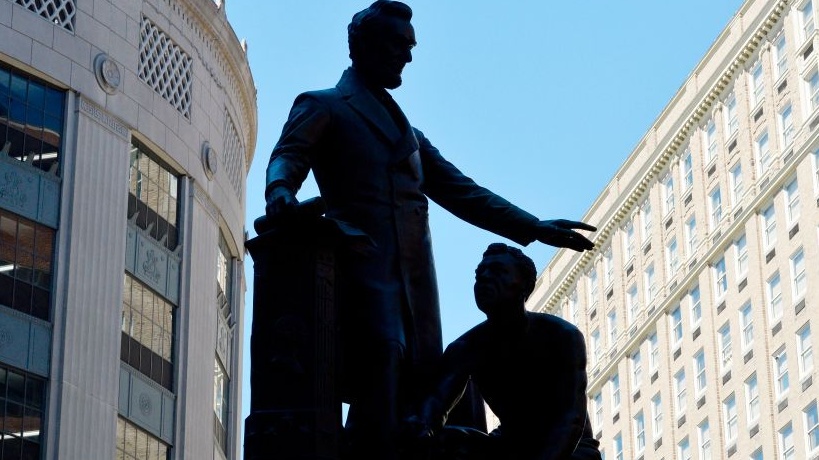City officials in Boston announced that a statue illustrating a formerly enslaved man groveling beneath President Abraham Lincoln was removed from Park Square in Boston, Massachusetts.
After a summer of national protests to remove confederate monuments deemed racist or offensive by today’s standards, the Boston Art Commission voted to remove the "Emancipation Group" statue in June after hosting two public forums to gather community feedback, according to CNN.
The statue shows a dignified Lincoln standing above a nearly naked freedman elated that his chains have been broken.
The Emancipation Group statue came down earlier today from its spot in Park Square. More on this story to come — here's some photos from @JesseCosta3. pic.twitter.com/LoC8TeVMsI
— WBUR (@WBUR) December 29, 2020
"We're pleased to have taken it down this morning," a spokesperson for Mayor Marty Walsh told CNN.
Representatives from Walsh's office confirmed that the statue was safely relocated to a storage facility until officials can agree on its new home.
"As expressed by so many during the public process this year, we fully agree that the statue should be relocated to a new publicly accessible location where its history and context can be better explained," the spokeswoman said. "The decision for removal acknowledges the statue's role in perpetuating harmful prejudices and obscuring the role of Black Americans in shaping the nation's fight for freedom."
The statue is a depiction of a photograph of Archer Alexander, an emancipated Black man who was a collaborator with the Union Army in an effort to achieve freedom for his family, according to Documenting The South, a digital database of American history. However, Alexander would be captured and forced back into his former status several times under the Fugitive Slave Act, CNN reports.
The statue removed on Tuesday is a replica of the original that resides in Washington, D.C., which like the Boston statue has drawn ire from concerned community members for how it portrays the freedman.
The "Emancipation Group" statue was meant to celebrate the emancipation of slaves, but some perceive it as a display of white dominance, according to the Boston Arts and Culture website. In 1876, Frederick Douglass penned a letter expressing his internal conflict with the statue.
“Admirable as is the monument by Mr. Ball in Lincoln park, it does not, as it seems to me, tell the whole truth, and perhaps no one monument could be made to tell the whole truth of any subject which it might be designed to illustrate,” Douglass wrote in a letter to the editor of The National Republic.
In June, Boston native, actor and activist Tory Bullock started a petition to drum up support to have the statue removed, CNN reports. Bullock tallied more than 12,000 signatures in favor of having it removed.
"It's an amazing funeral, I'm here to provide a silent eulogy for this piece of artwork that's been here for 141 years," Bullock said. "I'm proud, I'm Black and I'm young.”
The Southern Poverty Law Center found in a 2019 report that there were 718 Confederate monuments, with more than 300 in the southern states of Georgia, Virginia and North Carolina, as Blavity previously reported. The report also found at least 100 public K-12 schools and three higher institutions named after Confederate leaders.
If you have any creative ideas about reclaiming spaces once occupied by offensive antiquities, the Boston Art Commission is seeking ideas on what to do with the statue.
